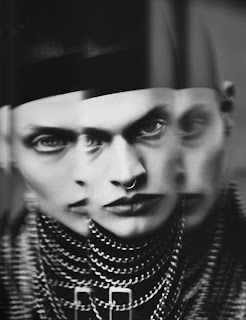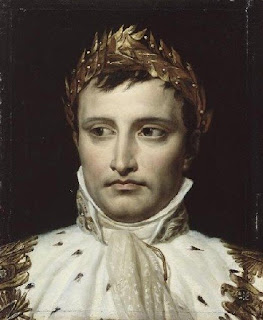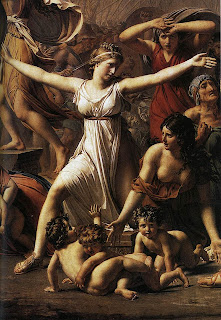I'm gathering inspiratinal images on differnt ways to depict blindness or the phonomina f poor sight through a beautiful mannor.
Saturday, April 13, 2013
Wednesday, April 10, 2013
Common Eye Issues
Common Causes:
Vision changes and problems can be caused by many different conditions. Some include:
- Presbyopia -- difficulty focusing on objects that are close. Often becomes noticeable in your early to mid 40s.
- Cataracts -- cloudiness over the eye lens, causing poor nighttime vision, halos around lights, and sensitivity to glare. Daytime vision is eventually affected. Common in the elderly.
- Glaucoma -- increased pressure in the eye, causing poor night vision, blind spots, and loss of vision to either side. A major cause of blindness. Glaucoma can happen gradually or suddenly -- if sudden, it's a medical emergency.
- Diabetic retinopathy -- this complication of diabetes can lead to bleeding into the retina. Another common cause of blindness.
- Macular degeneration -- loss of central vision, blurred vision (especially while reading), distorted vision (like seeing wavy lines), and colors appearing faded. The most common cause of blindness in people over age 60.
- Eye infection, inflammation, or injury.
- Floaters -- tiny particles drifting across the eye. Although often brief and harmless, they may be a sign of retinal detachment.
- Night blindness.
- Retinal detachment -- symptoms include floaters, flashes of light across your visual field, or a sensation of a shade or curtain hanging on one side of your visual field.
- Optic neuritis -- inflammation of the optic nerve from infection or multiple sclerosis. You may have pain when you move your eye or touch it through the eyelid.
- Stroke or TIA.
- Brain tumor.
- Bleeding into the eye.
- Temporal arteritis -- inflammation of an artery in the brain that supplies blood to the optic nerve.
- Migraine headaches -- spots of light, halos, or zigzag patterns are common symptoms prior to the start of the headache.
inspiration for the portraits
Here are some images that intrest me through their hint of blurring images dealing with vision and focus.
-S
Tuesday, April 9, 2013
Project proposal
1.
I am going to explore the fear and experiences
of impaired visual perception through means of photography. I am interested in
the evolution of this project during this quarter and where it will take me; but
I am first going to depict my personal experience and fear of continued lost
vision. I am going to construct scenes and depict images of my vision through
topical distortions. I will photograph my subject or staged scene and then distort
the scene through my cameras lens to focus on how I see not only without
corrective lens, but also how I image blindness would be and the effect it
would have on me.
I want this to incorporate other
senses that I would lean on such as touch, and the texture of objects, as well
as the psychological experience it may have such as feeling trapped or lost. This
concept originates from my personal experience of poor vision growing up and my
codependence on stronger corrective lens over the years. I am motivated to
explore this project to give sight to my audience on the visual strain I have;
the ultimate goal of this idea is to allow my audience to visually experience my
perspective, and my fear, and my reality. This is important for me to produce
because it is a daily and vital function of the body that diminishes over time
and many, including myself lack.
2.
I am looking at the neoclassical painting era. Artists
such as Jacques Louis David inspire me because his work and the movement
consisted of sharp outlines, reserved emotions, deliberate compositions, and
cool colors. The sharp outlines
and lighting within many of the scenes remind me of my technical aspect that I
cater to when I shoot. I would like to mock some of his prior works, through
environment and lighting styles creating my own scenes.
I have also been viewing the paintings of the Miaz
brothers, who use acrylic creating blurred, abstract portraits. These paintings
are inspiring to me because even though they are paintings they have a duality
to them that read as a photographic portrait. They also remind me of the
sublime paintings of Barnett Newman and Mark Rothko. Jonathan May’s documentary photographic works with blind
children in Africa have also inspired me. I am intrigued
how he has been able to share these children’s deficit through second person
imagery. But the main person that has inspired me to photograph my story,
experience, and fears through vision is Mark Andres the program director of
seeing with photography movement featured in the Shooting Blind book. He has put together a organization of artists
who have compelling, heart filled, and playful imagery on their first person
perspective of what it is like to be visually impaired. I want to continue to
research the movement of art programs for the visually impaired because it is an
important movement to give those without the blessing of communication through
sight thus giving us with sight the ability to learn and understand a greater
reality.
3.
The starting equipment for this project will
consist of digital camera, experimental distortion tools to be placed over the
camera lens, models, and photoshop after effects and digital manipulation.
Technically I will be using profoto, elechrom, and speed light, flashlight, and
alternate light sources dependent on the subject and scene.
4.
My goal for the completion of this project would
be 7 sets of 2 images printed at 12X18 or larger, they will be presented lined
up with the in sharp image accompanied by the blurred images rendered to my depictions
of the idea. I would also like to look into presenting them with different
lens/glass of distortion degrees laid on top of them when appropriate.
Inspiration shot for how to dipect what i see and my fear:
Saturday, April 6, 2013
Neoclassical Painting Incorporation
Neoclassical painting by definition: “New” classicism - a style in 19th century Western art that referred back to the classical styles of Greece Rome
Marie Guillemine Benoist was born in Paris. Her training as
an artist began in 1781 under Élisabeth Vigée Le Brun, and she entered
Jacques-Louis David's atelier in 1786 along with her sister Marie-Élisabeth
Laville-Leroux. The poet Charles-Albert Demoustier, who met her in 1784, was
inspired by her in creating the character Émile in his work Lettres à Émilie
sur la mythologie (1801). In 1791 she exhibited for the first time in the Salon
de Paris, displaying her mythology-inspired picture Psyché faisant ses adieux à
sa famille. Another of her paintings of this period, L'Innocence entre la vertu
et le vice, is similarly mythological and reveals her feminist interests, vice
is represented by a man, although it was traditionally represented by a womann 1800, she exhibited Portrait d'une négresse in the Salon. Six years
previously, slavery had been abolished, and this image became a symbol for
women's emancipation and black people's rights. This picture was acquired by
Louis XVIII for France in 1818.
Jacques Louis David 1748-1825 | French neoclassicist painter
look at the lighting on the subjects. I want to use this neoclassical strong use of lighting and imagery for my scene set ups for my project
Johannes, Jan or Johan Vermeer was a Dutch painter who specialized in domestic interior scenes of middle class life
Rembrandt Harmenszoon van Rijn : Rembrandt was a 17th century painter and etcher whose work came to
dominate what has since been named the Dutch Golden Age. One of the most
revered artists of all time, Rembrandt's greatest creative triumphs are
seen in his portraits of his contemporaries, illustrations of biblical
scenes and self-portraits as well as his innovative etchings and use of
shadow and light.
a link to visit Art style and Art medium definitions:
http://www.thecollectionshop.com/Art_Terminology.asp
Subscribe to:
Comments (Atom)
















